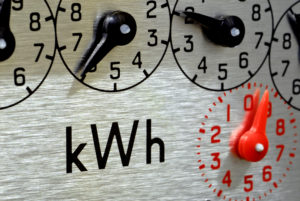 Previously in this blog, I wrote about delays that had arisen in connection with the implementation of California legislation intended to benchmark energy consumption data for nonresidential buildings and to require disclosure of this data in conjunction with the sale, lease or refinancing of those structures. The California Nonresidential Energy Use Disclosure Program, known as AB 1103, was enacted to mandate benchmarking of energy consumption as well as the disclosure of this information, in order to introduce transparency into these transactions.
Previously in this blog, I wrote about delays that had arisen in connection with the implementation of California legislation intended to benchmark energy consumption data for nonresidential buildings and to require disclosure of this data in conjunction with the sale, lease or refinancing of those structures. The California Nonresidential Energy Use Disclosure Program, known as AB 1103, was enacted to mandate benchmarking of energy consumption as well as the disclosure of this information, in order to introduce transparency into these transactions.
Unfortunately, difficulties arose in the implementation of this law. Not only were property owners and utility companies forced to track energy consumption in commercial buildings of particular sizes, they were also expected to establish benchmarks for each building and compare actual usage against the building-specific benchmarks. A key provision of the law also specified that this data be disclosed to prospective new owners, lessees or lenders. Due to significant difficulties in obtaining authorization from separately metered tenants to release this information, however, utility companies faced a nearly insurmountable task in sharing what they collected. Further, the obligation that these materials be shared with transferees and financiers prior to the closing of sale, lease and lending transactions hindered the orderly processes for these commercial matters in some cases.
Stepping into the breach, the State of California enacted legislation in 2015 that repealed AB 1103 effective December 31, 2015, and replaced it with a new law effective January 1, 2016. This new law, AB 802, gives owners of certain nonresidential structures in California of 50,000 square feet or more improved means of accessing whole-building energy consumption information. California utilities, including electric, gas, steam, and fuel oil, are now required to maintain twelve consecutive months of energy usage data and must provide whole-building data within four weeks of a request by any building owner. (If buildings do not meet these criteria, the owners must obtain and submit authorizations from their tenants in order for the utility to provide this data.)
Although benchmark data is now technically available under the new law, the details of how to calculate such a benchmark and provide comparative information with respect to a transaction without running up against the requirement of authorization by tenants (as was the case under the old law) will not be finalized until January 1, 2017. As such, there is no statewide energy use disclosure requirement with respect to sales, leases or financing of commercial property in 2016.
In July 2016, the staff of the California Energy Commission (“CEC”) submitted a preliminary draft of the regulations detailing the new benchmarking and reporting process. The proposed new process will allow prospective owners and lessors to make business judgments about the energy efficiency of commercial structures by accessing utility-supplied information that will be aggregated, stored, and made available for searching and analysis.
It is anticipated that the CEC staff recommendations will be finalized by the end of this year and available for final confirmation and approval by the full CEC sometime in early 2017, according to Erik Jensen of the CEC staff. The new process is expected to require public disclosure of certain operating performance data as well as disclosure of certain energy use data not previously available to the public.


